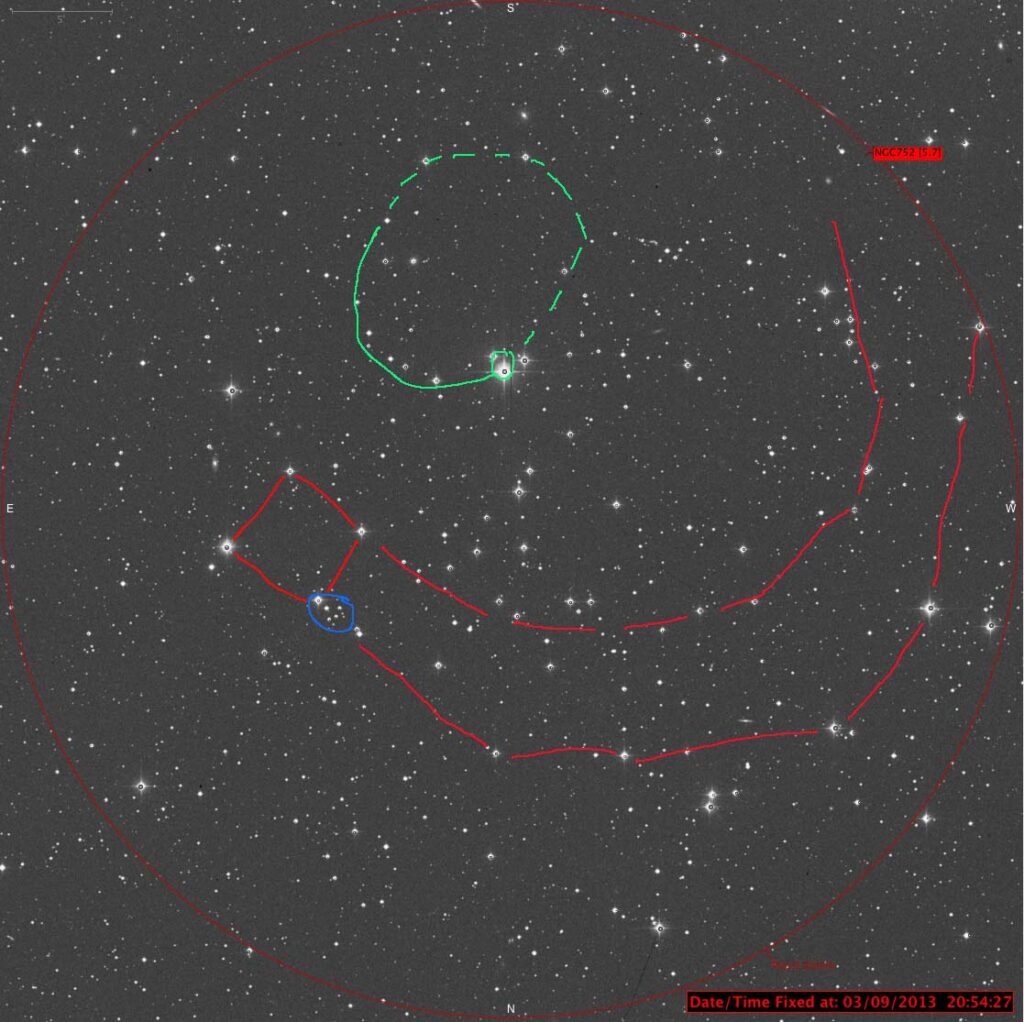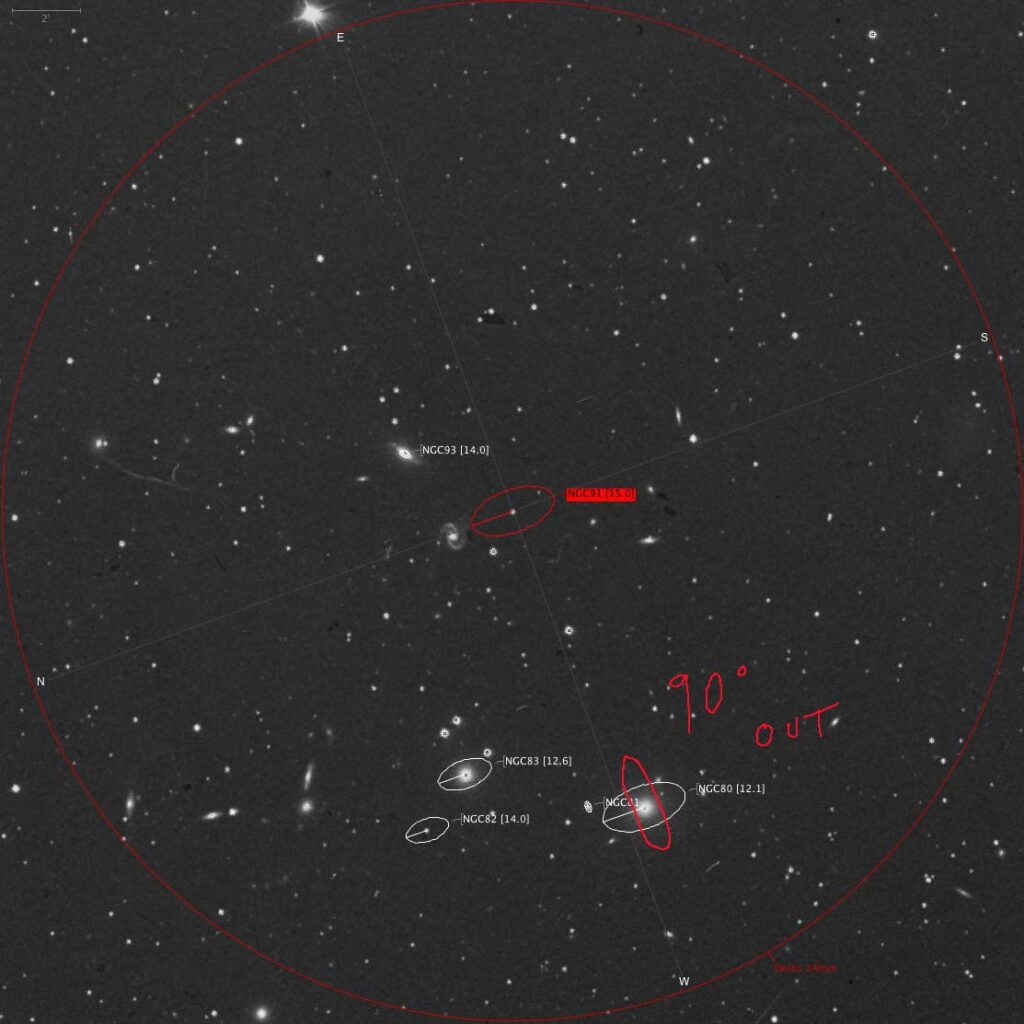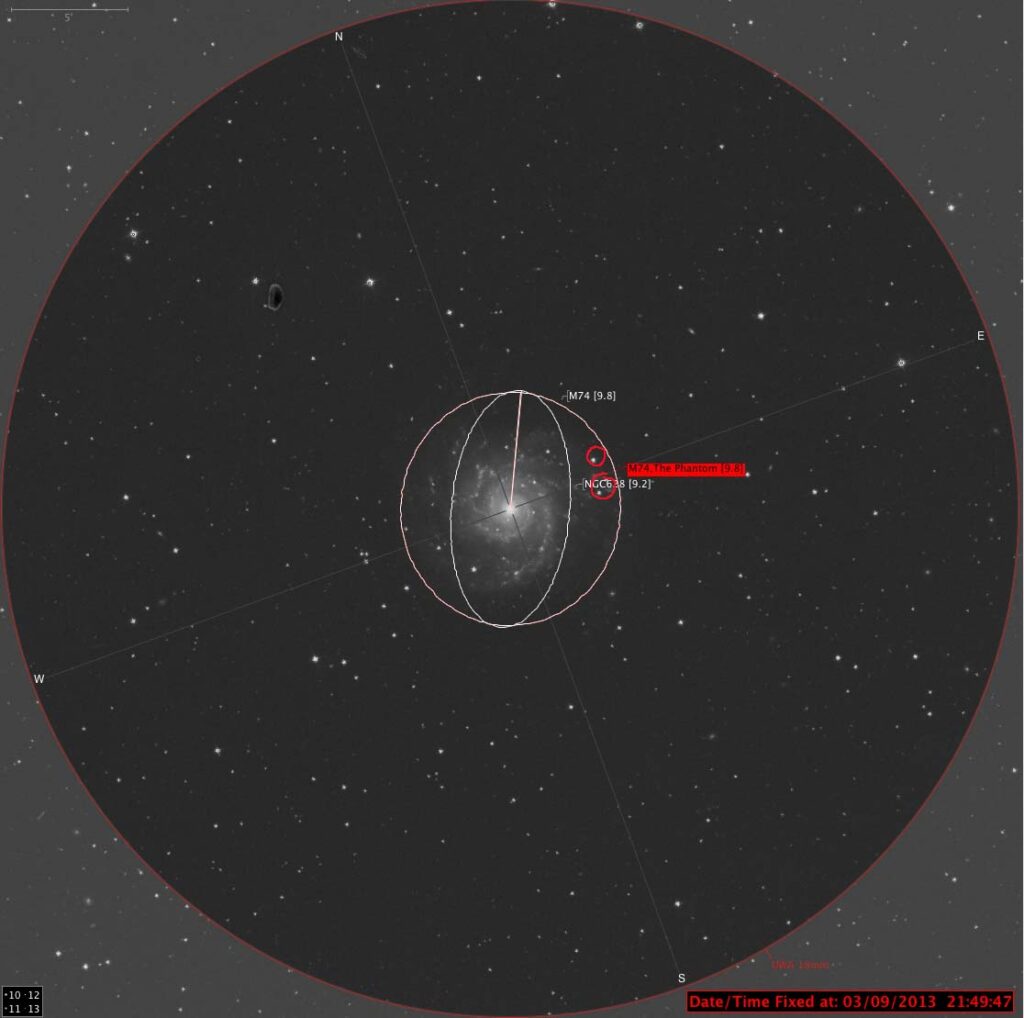Now, that’s much better. With August now behind us, the transparency seems to have returned and this evening it was good to be able to see some galaxies again.
Finishing of all the objects in Sagittarius is still proving to be a problem. I only have M55 to go, but every time I’ve tried to observe it, either trees are in the way, or the ground hugging murk that M55 lies in impossible to make out anything but the faintest of smudges.
The Caroline Herschel list is also coming along nicely and only three more objects need to be observed before this catalogue is complete.
Session Data
- Date: 3/09/2013
- Time: 20:25 – 22:57 UT
- Temp: 14.0c,
- Air Pressure: 1024Mb,
- Humidity: 99%,
- Dew point: 13.7c,
- Wind Speed: 6.0 MPH .
- Seeing: I Perfectly Stable,
- Transparency: Clear.
NGC659

Now this is interesting. For some reason, I didn’t realise that I had observed this object four days earlier. I’m surprised that the Pentagon grouping didn’t jog my memory.
In the Altair Astro 250mm, Delos 14mm, 145 X, 29.8′ West is to the 11 o’clock. Again, I see the Pentagon of stars, but tonight I see a trailing of stars heading from that going up to the 1 o’clock position before heading off to the 10 o’clock and then out of the FOV.
NGC752

In the Altair Astro 250mm, Plossl 40mm, 51 X, 50.8′, West is to the 3 o’clock.
There are two bright stars of 7.0 and 9.0 mag at the 12 and 9 o’clock position about halfway out of the FOV.
The cluster is very open and seems to be concentrated from the centre to the 4 o’clock position. At the 7 o’clock there is a trapezium of four stars. Anticlockwise from here, there are two curved parallel lines of stars that head off to the 3 o’clock before arcing towards the 12 o’clock.
The bright star at the 12 oclock is HD11885 and this forms the right hand side of a cup shape group of stars heading off to the 10 o’clock. Stare for a little longer and this cup shaped curve continues round until you end up with an egg shaped oval.
Compared with all the stars in the FOV, HD11885 is orange, while and the other bright star at 9 o’clock HIP9245 is a pale yellow. All the other stars blue/white.
Trying the Altair Astro 250mm, UWA 18mm, 113 X, 43.6′ the FOV isn’t large enough to encompass the cluster.
Looking at that trapezium shape again – just off to the right of the bottom right hand star is a grouping of closely spaced stars that give the impression of a nebulous region. I think this is probably caused by light scatter off some high thin cloud that is seen in patches.
NGC91, NGC80, NGC83 and NGC82

M91 is just off centre of the FOV, but at 15th mag, it’s only just visible with averted vision. Off to the the 5 and 6 o’clock, are what look to be 3 fuzzy stars which the chart says are the galaxies NGC 80, 83, and 82.
M91 is barely visible so I’ve shut the screen down and waited 5 minutes for my dark adaption to improve.
After a few minutes staring at M91, I can now make out an oval running 9 o’clock to 3 o’clock. There is a faint core, but this isn’t as bright as the stellar like cores of the three others galaxies to the 6 o’clock.
Turning my attention to NGC80, this is definitely looking like a Galaxy now and appears much brighter than M91. My eyepiece view has it oriented 11 to 5 o’clock, but that is 90 degree out when you look at the chart.
M91 is still oh so faint – This must be the faintest galaxy that I have observed at 15.0 mag. NGC82 and
NGC83 doesn’t show any detail except for a fuzzy core like structure.
With NGC80 being so much brighter than M91 and I’m surprised Caroline Herschel didn’t pick this out rather than M91 in her sweep. Maybe it just didn’t pass through her FOV!
M74

In the Altair Astro 250mm, Plossl 40mm, 51 X, 50.8′, West is to the 8 o’clock. It’s very faint.
Change to the Altair Astro 250mm, UWA 18mm, 113 X, 43.6′, and it looks a little brighter, is circular and fills about a 1/4 of the FOV.
Going to the Altair Astro 250mm, Delos 14mm, 145 X, 29.8′ It does actually look more like a very faint Globular Cluster, where the brighter area outside of the brighter core looks to contain lots of unresolved stars. The core is dense but not bright enough to look stellar.
Embedded at the 3 o’clock are a couple of 12.0 and 13.0 mag stars.
NGC6888
Tried various eyepiece combinations, but for the second time of observing, I have not been able to see anything. Really do need to try using a UHC filter and for await slightly better conditions.